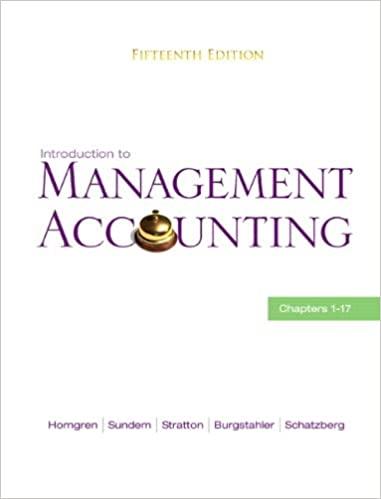Question
A well-known multinational car manufacturing company has developed a prototype small town car fuelled solely by hydrogen. It intends to market this through a subsidiary
A well-known multinational car manufacturing company has developed a prototype small town car fuelled solely by hydrogen. It intends to market this through a subsidiary company called the Hydrogen Car Project (HCP). This vehicle is code named H1. It will carry a minimum of two passengers and have luggage space adequate for a family shopping trip. The luggage space will be convertible into two child seats, greatly enhancing the flexibility of this vehicle. Its maximum speed will be 60 mph (100 kph) and it will have a range of approximately 150 miles (240 km) from a full tank of hydrogen.
Harmful emissions from the H1 will be zero as the only waste product from running the engine will be water. Based on current energy prices, the H1s fuel cost per mile is about half that of existing equivalent-sized cars. The number of hydrogen fuelling stations, although small at the moment, is gradually increasing and it is assumed that this will have reached a sufficient level to support this type of car by the time the H1 is launched.
A comprehensive business plan has been produced to investigate the economic viability of this venture. During negotiations, the joint owners agreed that, due to the risks involved, it was essential that the return on capital employed (ROCE) should be a minimum of 15% a year. Having completed the business plan they also agreed that, due to the critical nature of the forecast sales volumes, independent market research should be commissioned to produce a demand forecast at selling prices within 1.000 of their initial estimate.
A) Extracts from business plan
The competition has been identified as those electric/hybrid cars which have been recently introduced by most of the current global car manufacturers. Initially, the H1 will be built to a single basic specification and the prices of the nearest competitors have been identified as follows:
Car 1 11.600
Car 2 11.300
Car 3 11.200
Car 4 10.700
Car 5 10.400
The business plan adopted a selling price of 10.000 for the H1 which gave a profit margin of 20%. It also assumed a level of activity which produced a ROCE of exactly 15%. To enable HCP to produce and market its electric car, capital of 1.000 million will be needed for buildings, machinery, office equipment, IT systems and other fixed assets.
The maximum production capacity is 90.000 cars a year. HCPs best estimate for the production cost of one car at the planed level of sales is as follows:
|
| |
| Direct materials | 2.266 |
| Direct labour | 400 |
| Prime cost | 2.666 |
| Variable production overheads | 334 |
| Fixed production overheads | 1.000 |
| Manufacturing cost | 4.000 |
Annual non-production fixed overheads, including administration and marketing are expected to be 300 million.
B) Extract from market research report
Demand forecast:
| Selling price | Annual demand |
| Units | |
| 11.000 | 44.880 |
| 10.800 | 53.720 |
| 10.600 | 59.160 |
| 10.400 | 62.560 |
| 10.200 | 64.600 |
| 10.000 | 68.000 |
| 9.800 | 71.400 |
| 9.600 | 74.120 |
| 9.400 | 78.200 |
| 9.200 | 85.000 |
| 9.000 | 94.520 |
Advise HCP on its operating level and selling price. Include a discussion of the specific business risks involved. If HCP decided it needed to spend an extra 20 million on launching the H1, how might it achieve this without reducing its target profit?
Step by Step Solution
There are 3 Steps involved in it
Step: 1

Get Instant Access to Expert-Tailored Solutions
See step-by-step solutions with expert insights and AI powered tools for academic success
Step: 2

Step: 3

Ace Your Homework with AI
Get the answers you need in no time with our AI-driven, step-by-step assistance
Get Started


